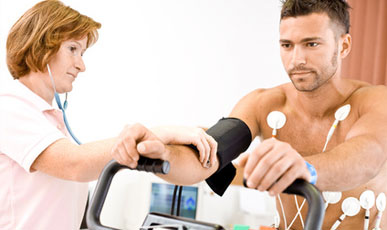Do I Really Need a Stress Test?

A stress test, also known as the treadmill test or exercise tolerance test, measures the amount of blood flowing through your heart while it is working the hardest. These tests measure your heart’s ability to work under duress by measuring your heart rhythm, pulse rate and blood pressure. Many doctors and cardiologists claim that it gives them a better picture of your heart’s health than an ordinary EKG.
The test is often administered to those who have experienced chest pain, have symptoms of coronary heart disease or conditions that put them at a higher risk of developing coronary heart disease. They may also be used as a screening test for those who are diabetic, overweight or over 40 to ascertain the condition of their heart. Stress tests may also be used to gauge the effectiveness of ongoing heart disease treatment and to gauge the safety of an exercise regimen.
If you have been asked to take a stress test then it is very likely that you belong to one of these categories and that your doctor is completely justified in wanting to ascertain the condition of your cardiovascular system. Doctors consider stress tests to be one of the best tools for diagnosing and estimating the risk of developing heart disease.
Reasons for performing this test
- You are experiencing chest pain, a sign of coronary heart disease
- You are experiencing severe, recurrent bouts of angina
- You have had a heart attack
- To evaluate your heart function in case you have a heart valve problem
- You have high blood pressure (hypertension)
- You are diabetic
- Your cholesterol levels are high
- You are over 40
The test is performed by first attaching numerous wires to your chest, arms and legs. These help to read your heart’s electrical pattern. Your blood pressure is taken while standing and lying down. You will then have to walk for about 10 minutes on a treadmill, which is made to go incrementally faster. Your blood pressure and heart rate are monitored at periodic intervals. These physical changes will also be monitored after the exercise routine is completed.
If walking on the treadmill produces symptoms of chest discomfort, breathlessness or dizziness and these symptoms are accompanied by changes in your EKG indicating inadequate blood flow to the heart, then you may have coronary heart disease. In some cases, additional testing may be required.
Reference